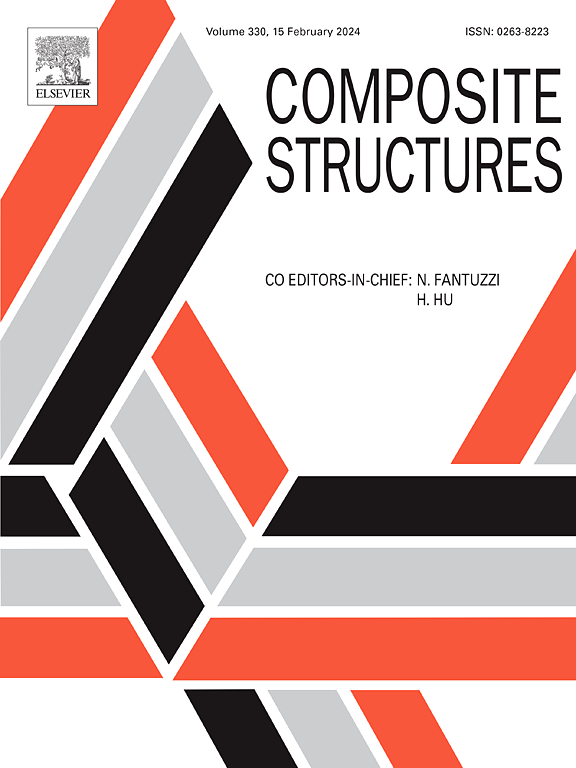Layup angle effects on the damage and fracture behaviour of fibre composite foldcore sandwich structures under impacts
IF 6.3
2区 材料科学
Q1 MATERIALS SCIENCE, COMPOSITES
引用次数: 0
Abstract
The S-shaped foldcore structure, an evolution of the V-shaped foldcore, offers enhanced energy absorption and impact resistance. Due to the complexity of the foldcore and the strong anisotropy of the fiber material, the fiber laying angle significantly influences the foldcore’s performance. This study investigates the effect of the fiber lay-up angle on the S-shaped foldcore’s anisotropy by fabricating foldcore sandwich composite panels using hot compression molding. Panels were laid along the in-face folding direction, the out-face folding direction, and cross-laid in both directions. A low-speed impact method was used to observe and analyze the damage to the foldcore structure. The impact process was also simulated using the finite element method combined with the Hashin’s criterion as a means of identification of material failure initiation to analyze the damage and fracture process. Results showed that the composite foldcore sandwich panel laid along the in-face folding direction exhibited the strongest impact resistance. Panels laid in the in-face folding direction were more prone to fracture due to higher damage levels, while those with fibers in the out-face folding direction were more susceptible to fiber tensile damage, causing more fracture in rear panel.
求助全文
约1分钟内获得全文
求助全文
来源期刊

Composite Structures
工程技术-材料科学:复合
CiteScore
12.00
自引率
12.70%
发文量
1246
审稿时长
78 days
期刊介绍:
The past few decades have seen outstanding advances in the use of composite materials in structural applications. There can be little doubt that, within engineering circles, composites have revolutionised traditional design concepts and made possible an unparalleled range of new and exciting possibilities as viable materials for construction. Composite Structures, an International Journal, disseminates knowledge between users, manufacturers, designers and researchers involved in structures or structural components manufactured using composite materials.
The journal publishes papers which contribute to knowledge in the use of composite materials in engineering structures. Papers deal with design, research and development studies, experimental investigations, theoretical analysis and fabrication techniques relevant to the application of composites in load-bearing components for assemblies, ranging from individual components such as plates and shells to complete composite structures.
 求助内容:
求助内容: 应助结果提醒方式:
应助结果提醒方式:


